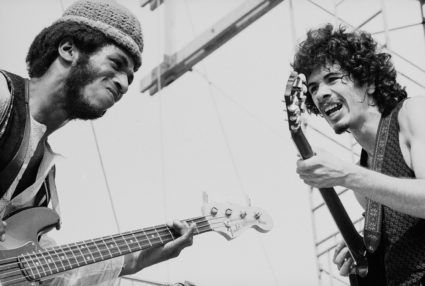
This year's recipients are actor Sylvester Stallone, singers Gloria Gaynor and George Strait, the rock band Kiss and actor-singer Michael…

Woodstock is surrounded by myths, legends and misperceptions. Here's the real story about five of them.
It made sense that co-organizer Michael Lang wanted to have the concert in Woodstock. The Catskill Mountains town was already known for being an artists' colony and Bob Dylan's rural hideaway. But key people in the town wanted no part of the concert. The festival was going to be held a bit south of Woodstock at an old industrial site in Wallkill, New York. But those plans fell through about a month before the show, sending Lang scrambling to find a new site. He was driving through farm country in Bethel, New York, when he spied a gently sloping alfalfa field. He struck a deal with the farmer, Max Yasgur.
"The New York State Thruway is closed, man," Arlo Guthrie famously announced from the festival stage. Not exactly. Police closed at least one thruway exit east of the festival to stem the source of a blockbuster traffic jam around the site. How bad were the roads? The New York Daily News reported on Aug. 16, 1969, that cars were being delayed by as much as eight hours between New York City and the concert site — a distance of less than 100 miles.
This one could be true depending on how you define "at Woodstock." The concert's medical director told reporters at the scene of the festival that there were two births: one at a local hospital after the mother was flown out by helicopter; the other in a car caught in traffic. Wade Lawrence, the director of what is now the Bethel Woods Center for the Arts at the festival site, recently confirmed the helicopter story with the medevac pilot, who said the mother gave birth at the hospital.
Yasgur told the young crowd massed on his field he was a farmer not used to speaking to groups. Self-deprecation aside, he ran a large dairy operation with a large herd, trucks and its own plant. Nephew Marty Miller said that he warned his uncle months earlier that Woodstock's organizers might come knocking, and that Yasgur was ready when it happened. Lang in his memoir describes Yasgur as a "sharp guy." Miller said that beyond rent money, Yasgur benefited from improvements to the field, such as wells. "Max was an astute businessman, very sharp. He was nobody's fool," Miller said.
The famous concert poster with a bird perched on a guitar neck advertised "three days of peace and music," spanning from Aug. 15-17. There was undisputedly music at Woodstock, and many attendees reportedly spent the weekend blissed out. But Woodstock lasted more than three days. Thanks to delays, it bled into the morning of Aug. 18. Jimi Hendrix came on stage after the sun came up, after a large portion of the crowd had left.
Sustain our coverage of culture, arts and literature.